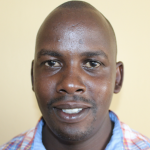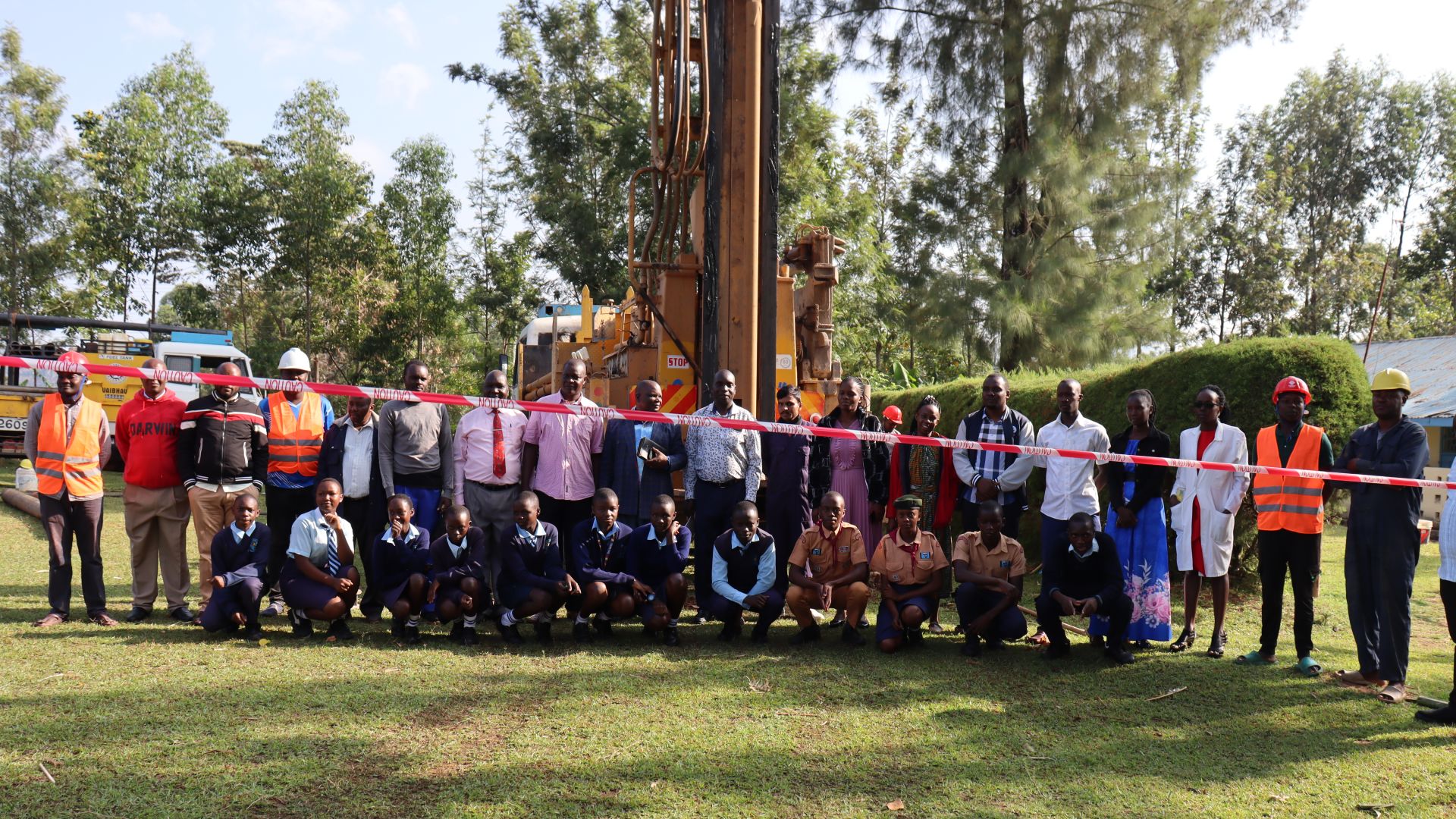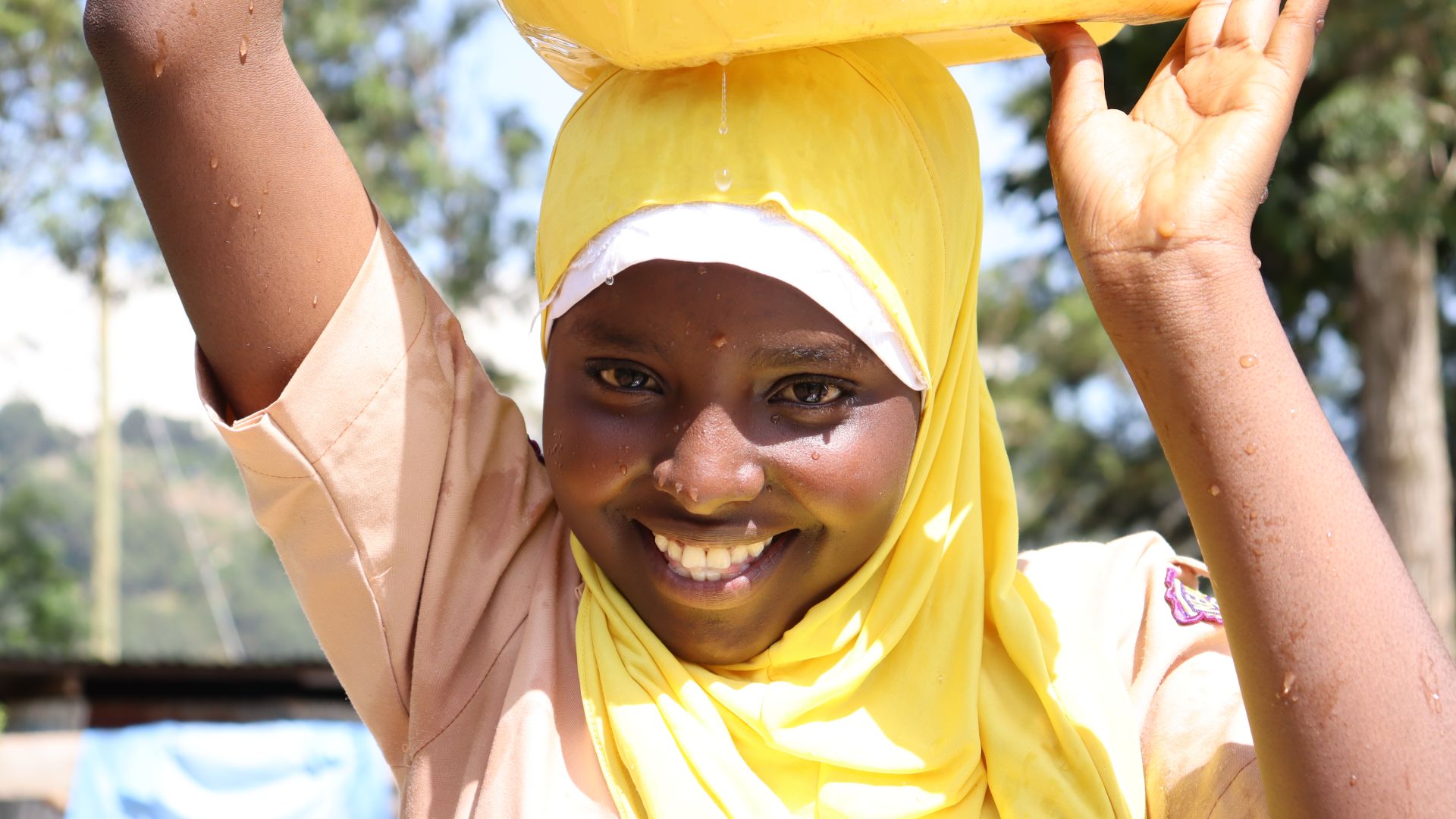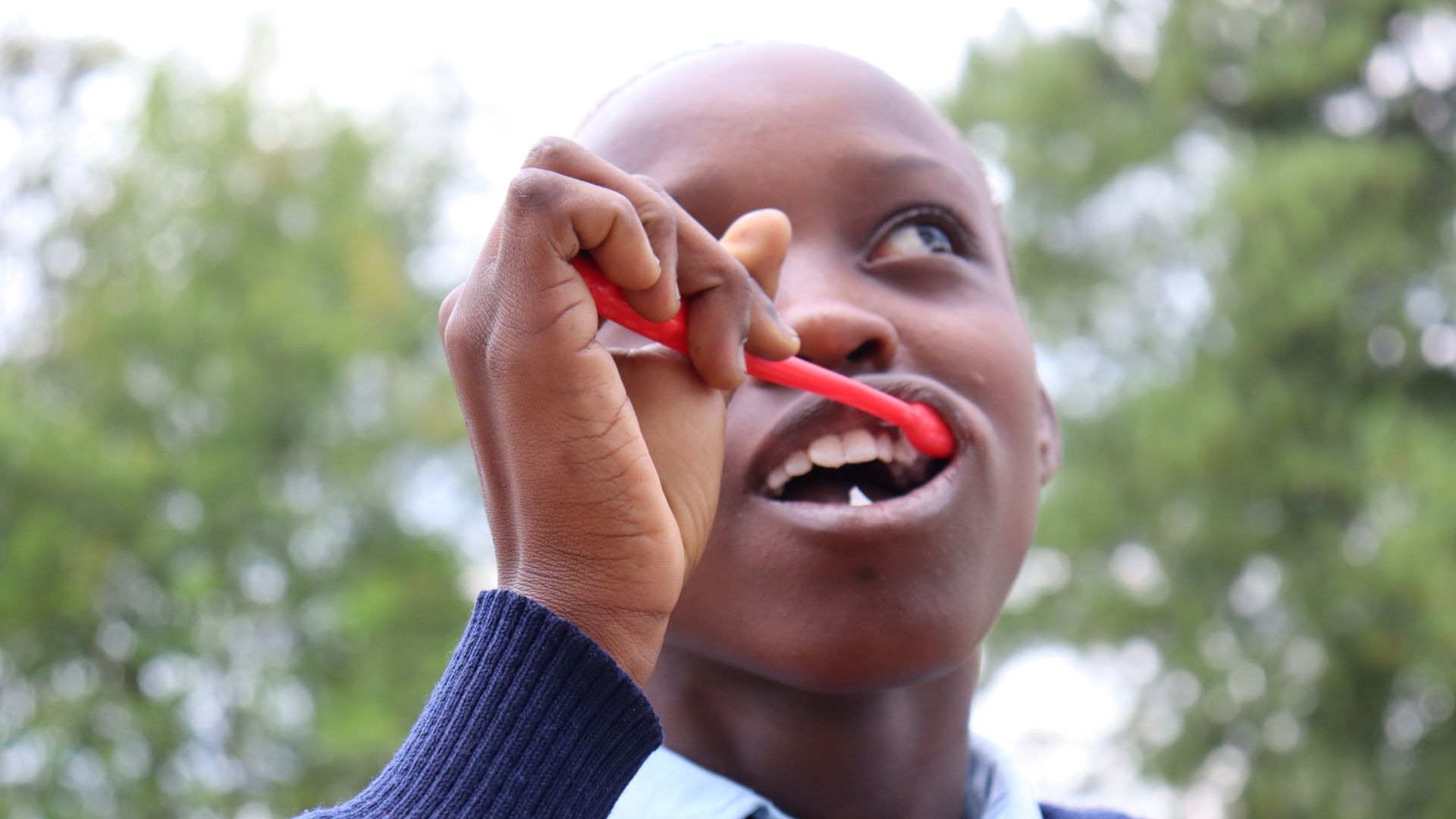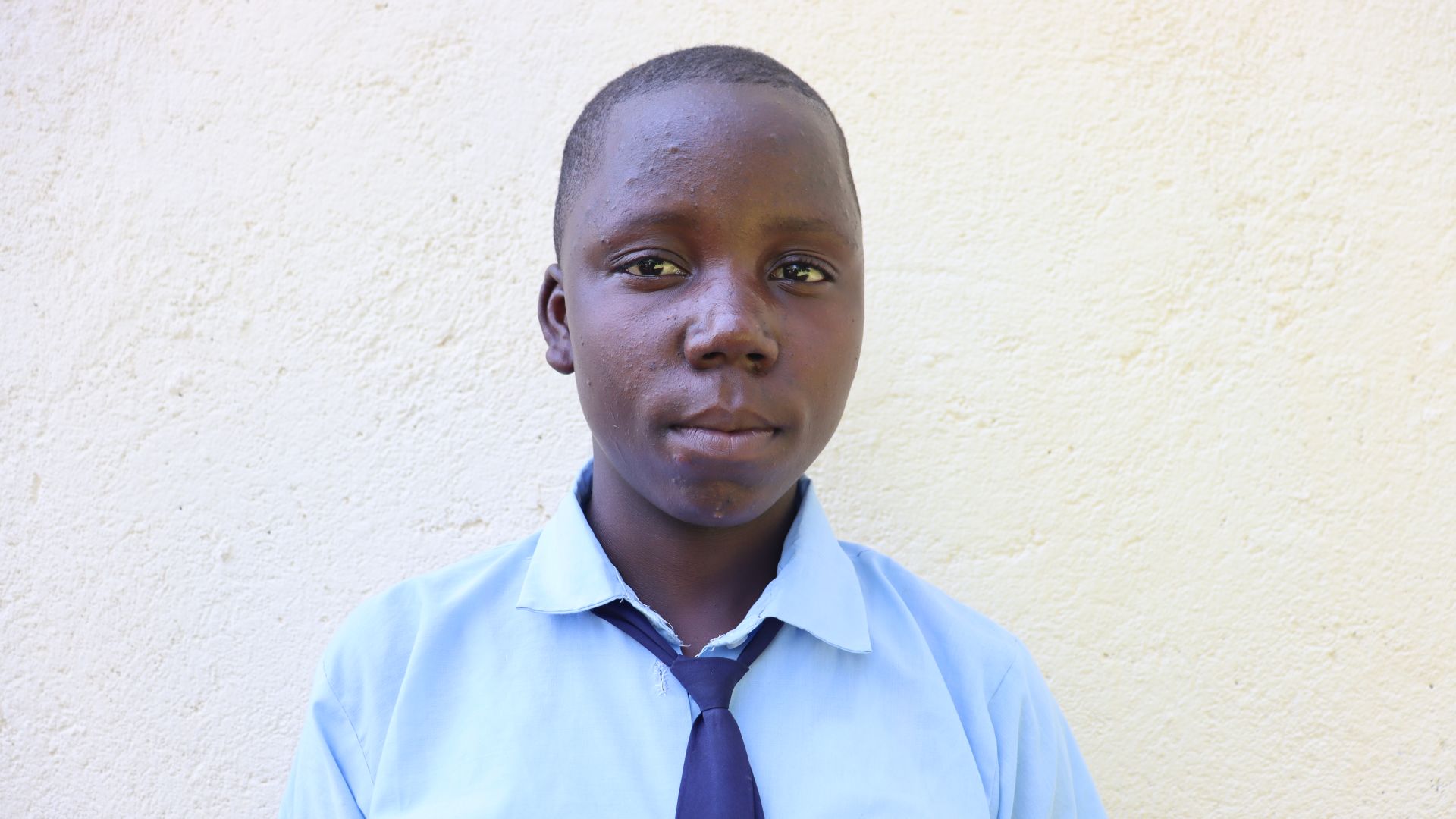At Stanley Godia Secondary School, 801 students and 44 staff spend so much time searching for water that little time is spent in the classroom. Although they have a few different water sources, none of them are reliable or convenient, so they struggle to meet their most basic needs.

Students waiting for their chance to collect water.
Field Officer Jonathan Mutai described the students' experience when their rain tank and nearby wells, which are highly seasonal, run dry.
"It is very hectic and tiresome to negotiate bad terrain while carrying containers loaded with water enough to meet their daily water demand. The challenge of unreliable water in school has made some of the learners hate coming to school, hence killing their future dreams and expectations of their parents to change their homes and society at large. The water itself is very dirty and it is unsafe for human consumption. Besides that, accessing [this] water source is very risky because it is far away from school, its environs are very bushy, and possibly [a] habitat of wild animals that may harm students while going or fetching water," Field Officer Jonathan Mutai said.

The surface water students are forced to consume when the other sources are dry.
15-year-old Tumaini painted a picture of the harrowing water collection experience at Stanley Godia Secondary School.

Tumaini.
"Most of the water sources in our school rely on rain, so any time there is no rain, we have to source water outside the school premises, and this is very hectic. I personally hate it most because by the time [of] arriving at [the] school, you are totally exhausted; hence, you cannot engage in any other constructive activities after going outside the school premises," said Tumaini.

Bringing water back to school.
"There has been what is called survival [of] the fittest; since there are limited access points in school compared to [the] school population, students have been scrambling for water. So, if you are not fit, you will have to be in line for a longer time," she continued.
Not only is getting an education challenging due to water scarcity, but the water they find is often unsafe to consume.
Tumaini shared a time when a water-related illness affected her.

Tumaini collecting contaminated water.
"Last term, before school breaks for recess in the month of April, I was diagnosed [with] severe typhoid after taking water from the water tank which had contaminated water. The waterpoint had been preserved for emergency cases of unpredictable water shortage; hence it had not been in use for quite some time. I had [a] severe headache to [the] extent I couldn't see properly. It made me so weak that I lost [my] appetite of eating my favorite food," continued Tumaini.
Water scarcity and water-related illnesses lay the groundwork for future potential to be unmet and dreams to go unfulfilled.

Class.
"During dry spells, we usually lack water within the school compound because our water sources are seasonal. The challenge usually forces us to go for water from other water sources outside the school premises. Those other sources are far hence eating on our time for studies, and that may translate to poor performance because of spending much time sourcing water at [the] expense of learning," Tumaini continued.
Installing a well at The Stanley Godia Secondary School will begin to alleviate the water crisis. Access to clean, convenient water will give students like Tumaini a chance to focus on their education without having to search for water or worry about the safety of the water they find.

Tumaini in class.
"After completing schooling, I would like to be a mechanical engineer. I am intending to do something known to have been made from my country," Tumaini concluded.
Steps Toward a Solution
Our technical experts worked with the local community to identify the most effective solution to their water crisis. They decided to drill a borehole well, construct a platform for the well, and attach a hand pump.
Well
Abundant water often lies just beneath our feet. Aquifers—natural underground rivers—flow through layers of sediment and rock, offering a constant supply of safe water. A borehole well is drilled deep into the earth to access this naturally filtered and protected water. We penetrate meters, sometimes even hundreds of meters, of soil, silt, rock, and more to reach the water underground. Once found, we construct a platform for the well and attach a hand pump. The community gains a safe, enclosed water source capable of providing approximately five gallons of water per minute. Learn more here!
Handwashing Stations
Alongside each water source, we install two gravity-fed handwashing stations, enabling everyone at the school to wash their hands. Handwashing is crucial for preventing water-related illnesses within the school and community. Student “health clubs” maintain the stations, fill them with water, and supply them with soap, which we often teach them how to make.
Latrines
We will construct two Ventilated Improved Pit (VIP) latrine blocks designed to prevent fecal disease transmission. Each latrine features a cement floor, making it easy to use and clean regularly. Three stalls will serve the girls, and three will serve the boys.
School Education & Ownership
Hygiene and sanitation training are integral to our water projects. Training is tailored to each school's specific needs and includes key topics such as proper water handling, improved hygiene practices, disease transmission prevention, and care of the new water point.
To ensure a lasting impact, we support forming a student health club composed of elected student representatives and a teacher. These clubs promote hygiene practices schoolwide and keep handwashing stations well-stocked. This student-led model encourages a sense of ownership and responsibility.
Safe water and improved hygiene habits foster a healthier future for everyone in the school and the surrounding community.

 Borehole Well and Hand Pump
Borehole Well and Hand Pump
 Rehabilitation Project
Rehabilitation Project













